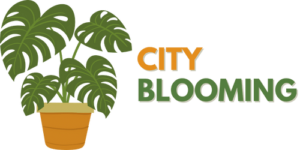The Basic Principles Of City Blooming
The Basic Principles Of City Blooming
Blog Article
An Unbiased View of City Blooming
Table of ContentsAbout City BloomingThe Best Strategy To Use For City Blooming7 Simple Techniques For City BloomingThe Facts About City Blooming RevealedThe 9-Minute Rule for City Blooming
Fascinated in growing food for sale in the City of Chicago? Thinking of beginning an area garden? Adjustments to the Chicago Zoning Regulation allow agricultural usages like neighborhood gardens and city farms in numerous components of the city. Below is a listing of frequently asked concerns concerning the regulations and guidelines that growers need to think about when planning an urban agriculture job.
The zoning modification does not modify any various other codes managing composting, structure permits, buying or renting City owned home, organization licenses or environmental contamination. There are existing codes that control these concerns and they continue to be completely impact and may apply to your project. Neighborhood gardens are normally owned or managed by public entities, public companies or community-based companies and kept by volunteers.
Urban farms grow food that is meant to be offered, either on a not-for-profit or for-profit basis. As a result of their commercial purpose, urban farms need an organization certificate. Yes. A neighborhood garden is allowed to offer surplus produce that was grown on site if the sales are accessory or subservient to the garden's primary objective described over.
City Blooming - The Facts
Composting is enabled however just for plant product that is created and made use of on website. The amount of garden compost material can not exceed 25 cubic yards at any given time according to the requirements in 7-28-715 of the City's Municipal Code. Yes. Because the dirt at the majority of brand-new garden websites needs changing, compost, dirt, wood chips, or various other products can be obtained to construct or enhance the expanding space - container and raised bed gardening etc..

If a structure permit is required then the hoophouse will certainly be taken into consideration an accessory building. You can figure out more about the structure authorization needs by contacting the Department of Structures. The 25,000-square-foot size restriction is meant to stop a single area garden from dominating a provided block or taking away from the block's existing residential or industrial personality.
The restriction does not apply to yards found in Public Open Area (POS) areas. Can there be even more than one community yard that is 25,000 square feet on a solitary block? Fence is not called for, however, yards that have large car park locations may be required to install fence or various other landscape design features.
Getting The City Blooming To Work
B1 & B2 districts require that all commercial use activities be conducted indoors. Is fencing needed for city ranches? Fences might be required, along with landscape design and screening, for particular auto parking areas and outside work or storage locations depending on location and the details task taking place.
Urban ranches require structure licenses and zoning approvals prior to construction (City gardening). Various other forms of city testimonial may be called for depending on specific structures, tasks, next page dimension, landscape design, licensing, public health and stormwater monitoring issues.
Yes. The kind of certificate is figured out by what is occurring at the website. The Department of Organization Affairs and Customer Security can aid identify the particular kind of service license that's called for. Yes. Off road parking is needed for many business jobs in Chicago. The required number of garage is based upon the number of staff members servicing site and not the square video footage of the expanding space.
City Blooming Things To Know Before You Buy

Yes. A metropolitan ranch can offer garden compost product generated on website, however, the operation needs to adhere to the policies in 7-28-715 of the Chicago Municipal Code. Yes. Aquaponic systems are enabled inside your home on metropolitan ranches in lots of zoning areas. A zoning review and structure authorization is required in order to install structures or systems and an organization certificate is called for as defined over.
Approximately 5 hives or nests of honey bees may be kept as an accessory usage. Nonetheless, beekeepers must sign up with the Illinois Division of Farming. For additional information regarding the proposed zoning amendment you might call the Division of Housing and Economic Advancement, Bureau of Preparation and Zoning at 312.744.8563.
Farming in cities and city locations An urban farm in Chicago. Urban farming refers to various techniques of cultivating. https://worldcosplay.net/member/1784867, processing, and distributing food in metropolitan locations. The term also puts on the location tasks of pet husbandry, tank farming, beekeeping, and cultivation in an urban context. Urban farming is distinguished from peri-urban farming, which occurs in backwoods beside residential areas.
City Blooming - Questions
It can entail a movement of organic cultivators, "foodies" and "locavores", who look for to develop social media networks founded on a common ethos of nature and neighborhood holism. These networks can develop using formal institutional assistance, coming to be incorporated right into regional town preparation as a "transition town" activity for sustainable metropolitan growth.
The extra direct accessibility to fresh vegetable, fruit, and meat products that might be become aware via metropolitan agriculture can improve food protection and food security while lowering food miles, causing reduced greenhouse gas exhausts, thereby adding to climate adjustment reduction. Some of the very first evidence of metropolitan agriculture originates from Mesopotamia.
Report this page